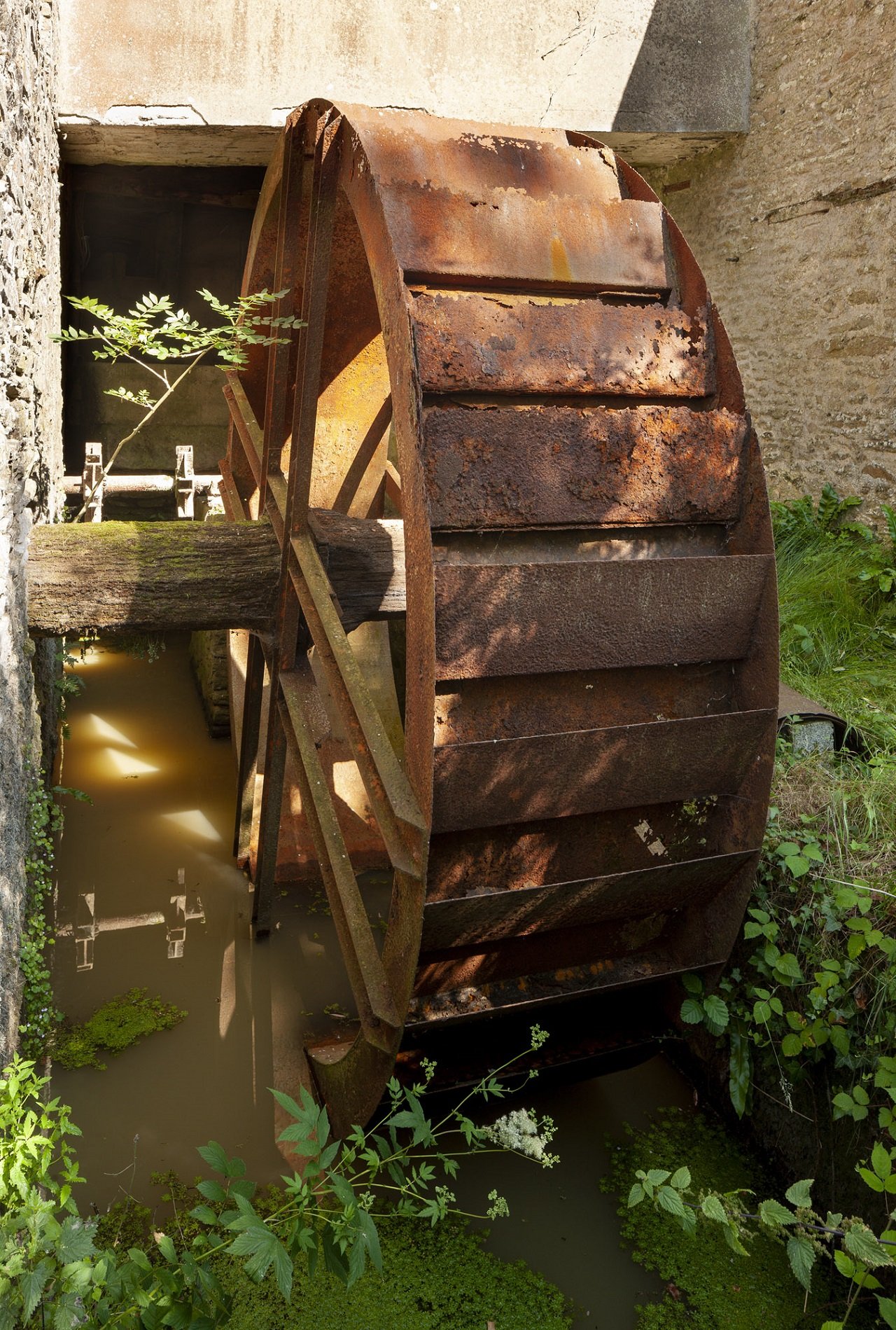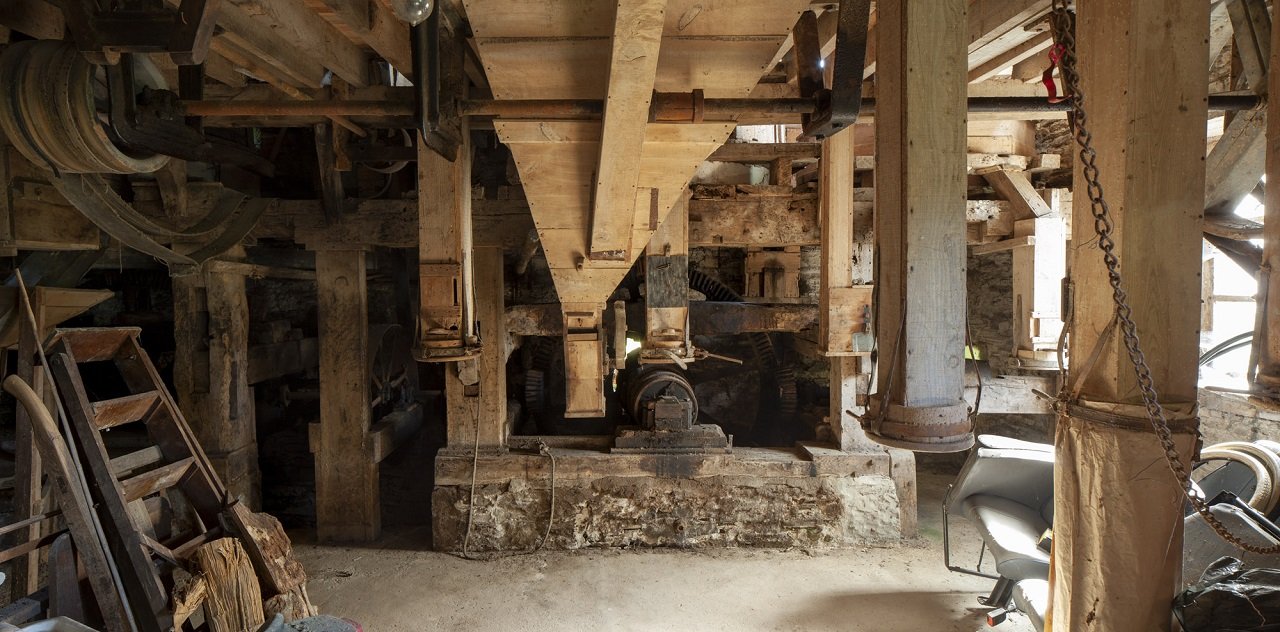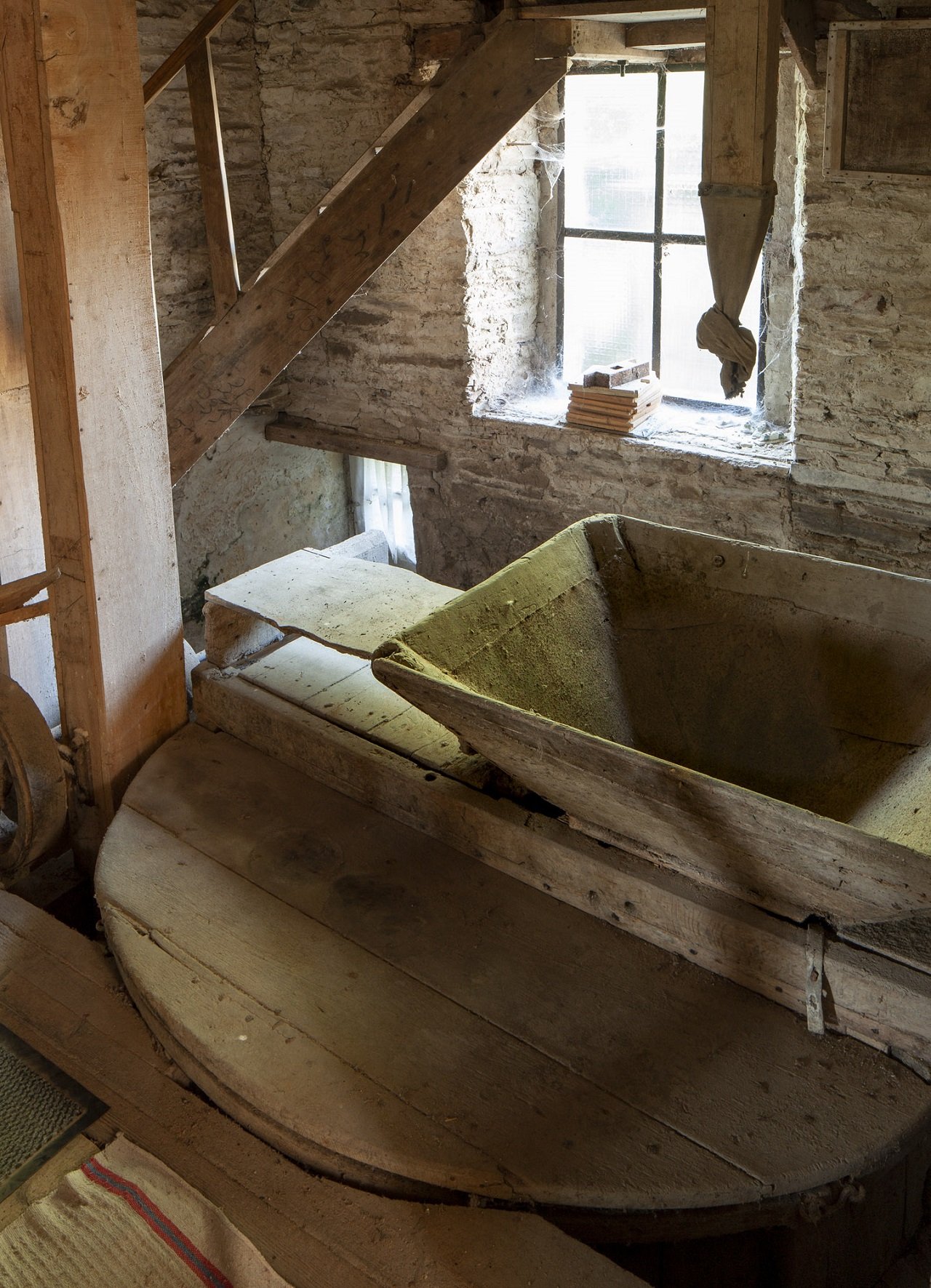9. MILL

The river system and the area of the municipality offer numerous sites for the installation of mills. If only one is located on the main river, the Seulles at the place called Orval, the others are fed by courses with lower flow, which required the development of rods and dams. What did not avoid, the shutdown of the mill because of lack of flow in summer.
The traces of the mills in Cahagnes date back to the 14th century. If the main function was to grind grain, other uses prevailed; there was thus a mill with a coon, intended to recycle the fabrics, especially the sheets. The only remnant today is the name of the place said: La Foulerie.


In 1882 the commune of Cahagnes had 6 mills in operation: at Benneville, Mondant, Aubigny, Vauvrecy, Orval and here in Hamars. These mills mailed the commune. Most of the land was cultivated to meet food needs first, and many owners owned their own “bakehouse”. Two mills were equipped to produce oil, especially for lighting from eyelets, rapeseed. These 6 mills had very different levels of activity if the amount of taxes revealed these differences. Servants or servants accompanied the most important.
Here the mill of Hamars appears on the maps at the end of the 18th century. He replaced a mill a little upstream at the place called La Rivière, which has now disappeared. The reach and the dam behind it are now filled. For a long time it was part of the Aubigny estate which shared with M. De Siresme, owner of the Boussigny estate, the right to grind there 3 days a week. Known as the Cahagnes Mill, it operated until the 1950s. It was equipped with 3 millstones, one for wheat or wheat, base of the food, one for barley intended for pigs, a third for sarrazin, culture very widespread in the Bocage in the 19th century, the cake was not that Breton. In addition to the milling of the grains, this mill was built to supply the village of Cahagnes with electricity after the fighting in the summer of 1944.
Moulin d'Aubigny: The Moulin d'Aubigny depends on the castle of the same name, belonging at the beginning of the 19th century to count Demontault (Demonteaux), also owner of the mills of Cahagnes and Mondant (destroyed). After passing through the hands of several owners as a report building, Antoine Lecreps was the first miller to become owner-operator in the early 1850s. He ceded it to Pierre Roger around 1864. Charles-André Barbe acquires it in 1868, then passes it on to his son Désiré. With his sons, he made an extension of the dwelling of the mill in 1920 (plaque with name and date). It formed an association with Paul Mariette, miller at Cormolain’s Cliquet mill, in the form of a cooperative. Since his production capacity did not change between 1914 and 1936, he declared a maximum daily crushing capacity of 10 quintals of wheat during the quota survey. He uses two pairs of millstones, the mill comprising a third pair of millstones, dedicated to buckwheat. The blushing is done with a hexagonal blushing. In addition to the hydraulic power developed by a wheel, the mill has a Crossley type 0-115 diesel engine with an output of 19 hp installed in 1933, used when needed. The Barbe family maintained the farm after the Second World War, but its production turned to animal flour. It installs a new iron wheel, still in place today. Maurice Barbe, last miller of the family, ceased its activity in 1983. The mill of Aubigny is located west of the castle of the same name, on the commune of Cahagnes. It was fed by a pond taken on the stream of La Rosière, now dried up. The building housing the manufacturing workshop and housing has a basement floor and a ground floor, built of granite rubble, as well as an attic floor in agglomerated concrete, with brick openings frames. The mill is still equipped with a hydraulic wheel with iron troughs, which no longer rotates, and two gear systems, including their pit wheels, framed by belfries. On the upper level are three pairs of grinding stones (two for wheat, one for buckwheat) and in the attic a bluterie and an oat flatter. A first shale extension, consisting of a basement floor, a ground floor and an attic in addition, extends the housing part of the mill. The second extension, built of granite rubble in 1920 (plaque with owner’s name and date worn), has a basement floor, a ground floor and a attic floor. The complex is covered by a succession of roofs with long covered gables, cement-asbestos for the workshop part and slate for both extensions. Connected to the mill by a covered concrete corridor, a building, with a ground floor and an attic, also made of granite rubble, is covered with a long-sided roof of asbestos cement with covered gables. It is extended by a bauge repair shop covered with a corrugated metal shed.
Moulin de Cahagnes: In the 19th century, the Moulin de Cahagnes belonged to several families of notables, not directly operating it. First owned by Count Demontault (Demonteaux), who also owned the mills of Aubigny and Mondant (destroyed), it was acquired around 1836 by Charles Julien, former deputy during the Hundred Days and mayor of Épinay-sur-Seine (Seine-Saint-Denis), then transmitted to Armand Julien, former general. Klopstein’s family acquired the mill at the end of the 19th century. At that time, the mill was developed by Armand Thérin, whose family had been operating the site since the second half of the century. His son Georges became the owner of the mill around 1926. At the time of the survey under future quotas in 1936, the mill could crush up to six quintals of wheat per day, the same amount as in 1914. To do this, the mill has three wheels to drive a pair of wheat grinders, one with buckwheat and one with barley. The latter can also be driven by a standby diesel engine. Hydraulic energy could also be substituted for animal energy, by the use of equine force. The blushing is done by a hexagonal blushing. For example, the mill produced 16,614 kg of flour in 1934 and 15,957 kg in 1935. The mill continued to operate during the Second World War, but ceased in the 1950s, with the family moving towards dairy farming. Located to the east of the village, at the place called Hamars, the mill of Cahagnes is fed by a diversion rod taken on the Seulles to the east of the site. A system of valves and a widening of the rod made it possible to carry out restraints during low-water periods. The arm of the Seulles, which runs high, later becomes a dead arm of the river. Today the water supply of the wheels that ran along the mill is dried up. La Seullette came to join the Seulles derivatives at the beginning of the Escape canal of the mill to resume the natural course of the river.
All the buildings are organized around a courtyard. The building of the mill includes the housing and the workshop of manufacture, workshop always equipped with a part of the gears that made the mill running and a pair of grindstones. Built on the ground floor and with a square floor and an attic floor, it is built of granite rubble and covered with a long-sided roof with covered gables, formerly made of thatch which is now slate. The horse barn is made of concrete blocks, covered with a slate shed. The common, on the ground floor and with an attic floor, are of construction similar to the manufacturing workshop.
